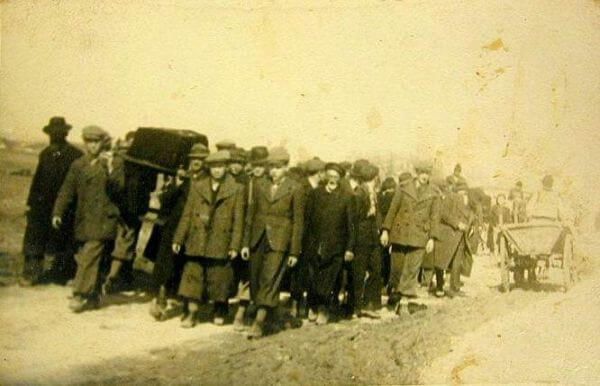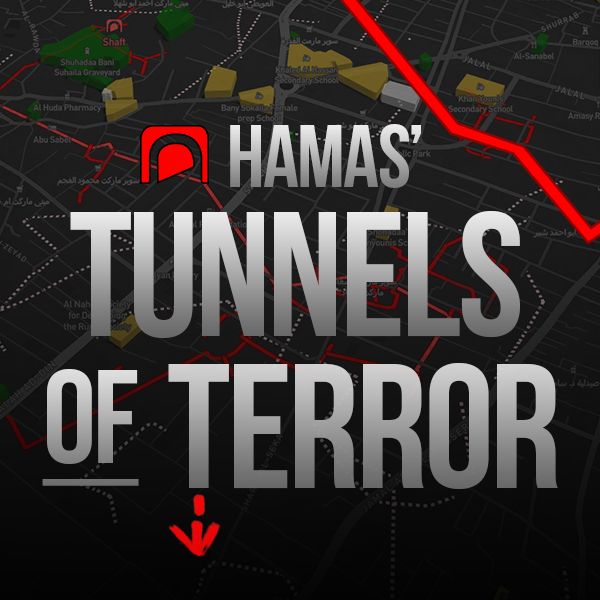Arab violence is frequently justified because of the “Naqba” of 1948 and the “occupation” of 1967.
After all, they insist, Jews forced Arabs from their homes and villages, so the Arabs have a right to fight to return to their ancestral property.
But if those are what the Palestinians are truly fighting against, how are we to understand Arab violence against Jews before the wars of 1948 and 1967 took place?
What is their explanation for Arab violence against Jews in the 1920s?
Yes, the 1920s!
Join the fight for Israel’s fair coverage in the news
The Mufti Incites Arab Violence
In 1919, Haj Amin el-Husseini, leader of one of the most prominent Arab clans in Jerusalem, began to organize “fedayeen,” (literally – “one who sacrifices himself”) – small groups of terrorists who were willing to die while killing Jews. The stated goal was to force the Jews to flee from Palestine. They first attacked Tel Hai, a Jewish neighborhood in the north near the Syrian border in January and then attacked Tel Hai again on March 1. These terrorists killed eight Jews and injured 200.
During March and April, more than a dozen Jewish agricultural settlements in the Galilee including Kfar Tavor, Degania, Rosh Pina, Ayelet Hashahar, Mishmar Hayarden, Kfar Giladi and Metulla. were attacked by Arab terrorists. During Passover of that year, the Mufti incited the masses to attack the Jewish population in the Old City of Jerusalem, killing five Jews and injuring more than 100.
Husseini began to organize larger attacks in 1921 and the British High Commissioner in charge of Palestine, Herbert Samuel named Husseini Mufti of Jerusalem with the hope that he could influence him to bring the Arab violence to a halt. The two even met on April 11, 1921 and Husseini promised that he would be “devoted to tranquility.”

But just three weeks later, on May 1, 1921, the Mufti incited Arabs to arm themselves and attack Jews in Jaffa. Terrorists came to the streets of Jaffa armed with knives, pistols and rifles and began to beat and murder Jews while looting Jewish stores and homes, killing 27 Jews and injuring 150.
The attacks spread to Jewish communities in Petach Tikvah, Rehovot, Hadera, and Haifa.
The year 1924 led to a new wave of Arab violence. The Mufti spread rumors that the Jews were planning to take control of the Islamic holy sites. That led to Arab looting of Jewish property, causing extensive damage, and attacks against Jews throughout Palestine. The sporadic attacks became much more organized and the terror targeted Jewish communities near Jerusalem, Hebron, Safed and Kfar Darom. In all, 135 Jews were killed and more than 300 were injured.
Related reading: How the UN Partition Plan Led to Israel’s Birth
Arab Violence Escalates
The Arabs learned that these terror attacks were an effective tool. That’s because British authorities responded to the attacks by appeasing the Arabs – via curbing the number of Jews allowed to immigrate to Israel and by moving Jews out of the areas which were attacked, most notably Hebron were Jews had been living for centuries.
The Mufti found a basis to further incite the Arab masses in September 1928. A small group of Jews chose to pray at the Western Wall on Yom Kippur and built a small divider to separate between the men and women as is traditional during Jewish prayer. The British were against this step and dismantled the barrier. The Mufti pointed to the Jewish “construction” at the Western Wall as a sign that they were attempting to take control of the al Asqa Mosque on the Temple Mount right next to the Western Wall. He called for “Jihad,” – “holy war” – leading to stonings and beatings of Jews trying to worship at the Western Wall.
The Arab violence spread beyond the Western Wall and on August 23, 1929, more than 1,000 Arab terrorists attacked Jews throughout Jerusalem, killing 47 under the battle cry, “defend the holy places!”
The Hebron Massacre
The attacks spread to other cities. The worst took place in Hebron where Arabs broke into the rabbinic seminary with axes, knives, and metal bars, murdering all the students and destroying the building. The murderous mob then massacred the Jews of the city, where Jews and Arabs had lived side by side in peace for years. Rabbi Yaakov Slonim, the city rabbi, called on Jews to find safety in his home. Because the rabbi had a good relationship with the local Arab clergy he assumed that nothing would happen to them.
Rabbi Slonim was tragically mistaken.
The Arabs stormed his home, and killed him, his family, and all who had sought refuge there. In all, 67 Jews were slaughtered in Hebron. The Jewish community, which existed there for centuries, was destroyed.
Read more: The Hebron Massacre of 1929
A few days after the Hebron massacre, the Jews of Safed, where Jews had also lived for centuries, suffered a similar pogrom. Local Arabs were joined by those from neighboring villages, murdering 18 Jews, injuring 40, and burning down 200 homes.
In total, with the attacks in other cities during those few days, 133 Jews were killed and 339 were injured.

The terror attacks continued and rose in 1936, with Arab terrorists killing over 40 Jews between April and July, aside from burning thousands of acres of Jewish fields and crops. The violence continued, leading to a massacre in Tiberias on October 2, 1938 in which the Arabs shot and burned 21 Jews, including 10 children below the age of 12.
The New York Times described the premeditated Tiberias massacre:
“Not since the riots of 1929, when Arabs fell on Jewish men, most of whom were rabbinical students, as well as women and children, in the ancient towns of Hebron and Safed, has there been in Palestine such a slaughter as the attack of last night…The attack apparently was well organized, since the Arab gang, before descending on Tiberias, cut all telephone communications. Coming in two parties from opposite directions at a given signal, which was a whistle blown from the hills surrounding the town, the firing began simultaneously in all quarters…the bandits went on to the house of Joshua Ben Arieh, where they stabbed and burned to death Joshua, his wife and one son, and then shot dead his infant son. In the same house three children of Shlomo Leimer, aged 8, 10, and 12, were stabbed and burned to death. Proceeding farther, the Arabs broke into the house of Shimon Mizrahi, where they killed his wife and five children, ranging in ages from 1 to 12 years, and then set fire to the house.”
Related reading: Three Noes That Set the Mideast On Course of Conflict
Why the Arab Violence?
In the 1920s and 1930s no Arabs felt a need to leave or flee from their homes. There was no Jewish state at the time and the Jews didn’t have an army to “occupy” Palestinian land.
So why did the Arabs attack and massacre the Jews during those years?
Is it possible that the “Naqba” and “occupation” are excuses to simply justify Arab violence?
Is it possible the Arabs simply refused to accept any Jews living in the Holy Land?
Liked this article? Follow HonestReporting on Twitter, Facebook, Instagram and TikTok to see even more posts and videos debunking news bias and smears, as well as other content explaining what’s really going on in Israel and the region. Get updates direct to your phone. Join our WhatsApp and Telegram channels!
Featured image: via Wikimedia Commons; Mufti and Hitler via Wikimedia Commons; Hebron funeral via Wikimedia Commons;
Before you comment on this article, please note our Comments Policy. Any comments deemed to be in breach of the policy will be removed at the editor’s discretion.

